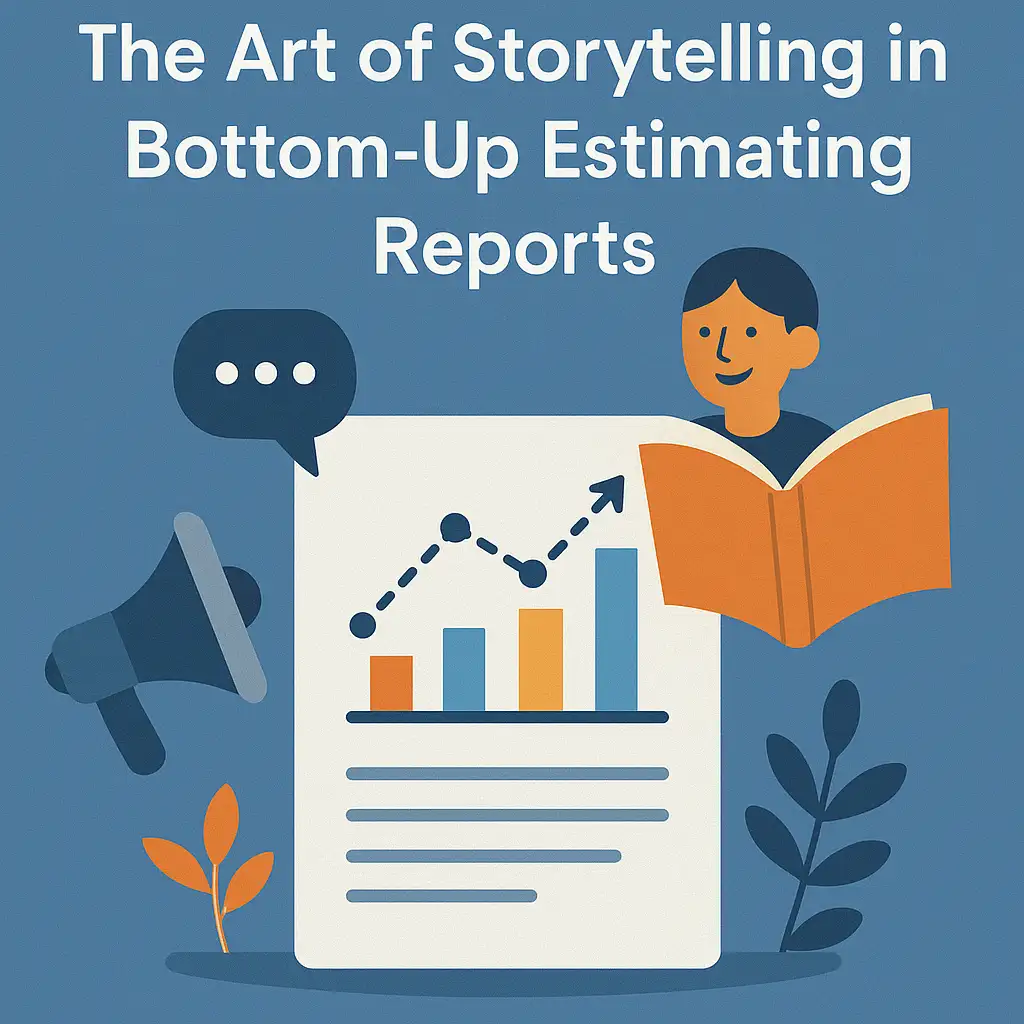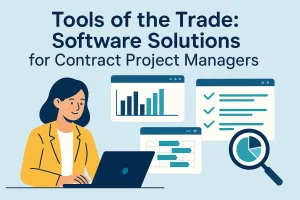Introduction to Bottom-Up Estimating
Bottom-up estimating is a project management technique that involves breaking down a project into its smallest components, or work packages, to assess the time, cost, and resources required for each task. This granular approach allows project managers to create highly detailed and accurate estimates, which are then aggregated to form a comprehensive overview of the project’s overall requirements. The significance of bottom-up estimating lies in its ability to provide a clear and precise understanding of what is needed to complete a project successfully, making it an essential tool for effective project planning and execution [6][14].
In contrast, top-down estimating is a method where estimates are derived from a high-level overview of the project, often based on previous similar projects. While this approach can be quicker and less labor-intensive, it may lack the detail and accuracy that bottom-up estimating provides. Top-down estimates are typically less reliable, as they do not account for the specific nuances and complexities of the current project [2][4]. Therefore, while top-down estimating can be useful for quick assessments, bottom-up estimating is preferred when accuracy is critical, especially in complex projects where every detail matters [3][15].
Accurate estimates are vital for project success as they directly influence budgeting, resource allocation, and scheduling. Inaccurate estimates can lead to cost overruns, missed deadlines, and ultimately project failure. By employing bottom-up estimating, project managers can ensure that all aspects of the project are considered, leading to more reliable forecasts and better decision-making throughout the project lifecycle [1][10]. This method not only enhances the credibility of the estimates but also fosters trust among stakeholders, as they can see the detailed breakdown of how estimates were derived [12].
Understanding the Art of Storytelling
In the context of bottom-up estimating, storytelling emerges as a powerful tool for enhancing report writing and presentation. By weaving narratives into estimates, project managers can transform dry data into compelling stories that resonate with stakeholders. Here’s how storytelling can be effectively integrated into bottom-up estimating reports.
Defining Storytelling in Project Reporting
Storytelling in project reporting refers to the practice of presenting data and estimates in a narrative format that captures the audience’s attention and facilitates understanding. Instead of merely listing figures and projections, project managers can frame their estimates within a story that outlines the project’s journey, challenges, and anticipated outcomes. This approach not only makes the information more relatable but also helps to contextualize the estimates within the broader scope of the project.
The Psychological Impact of Storytelling on Audiences
The psychological impact of storytelling is profound. Humans are naturally drawn to stories; they evoke emotions and foster connections. When project managers present estimates through storytelling, they engage their audience on a deeper level. This engagement can lead to:
- Increased Retention: Audiences are more likely to remember information presented in a narrative format compared to raw data. This is crucial in project management, where stakeholders need to recall key estimates and decisions.
- Enhanced Understanding: Complex information, such as detailed cost breakdowns or timelines, can be difficult to digest. A well-crafted story can simplify these complexities, making it easier for stakeholders to grasp the implications of the estimates.
- Emotional Engagement: Stories can evoke empathy and understanding, which can be particularly beneficial when discussing potential risks or challenges associated with a project. This emotional connection can lead to more supportive stakeholder responses.
Benefits of Engaging Narratives for Conveying Complex Information
Utilizing engaging narratives in bottom-up estimating reports offers several benefits:
- Clarity and Focus: A narrative structure helps to clarify the purpose of the estimates, guiding the audience through the rationale behind each figure. This clarity is essential for ensuring that stakeholders understand the basis of the estimates and the assumptions made.
- Motivation and Buy-In: When estimates are presented as part of a larger story, they can inspire confidence and motivate stakeholders to support the project. A compelling narrative can highlight the project’s potential impact, fostering a sense of ownership and commitment among team members and stakeholders.
- Facilitating Discussion: Engaging narratives can serve as a springboard for discussion, encouraging stakeholders to ask questions and provide input. This collaborative approach can lead to more refined estimates and a stronger project plan.
Crafting Compelling Narratives in Estimating Reports
When it comes to bottom-up estimating, the ability to communicate estimates effectively is crucial. Integrating storytelling into estimating reports can transform dry data into engaging narratives that resonate with stakeholders. Here are actionable strategies for crafting compelling narratives in your bottom-up estimating reports.
1. Outline the Structure of a Compelling Narrative
A well-structured narrative typically consists of three key components: beginning, middle, and end.
- Beginning: Introduce the project context and the purpose of the estimates. This sets the stage for the reader, providing background information that is essential for understanding the subsequent details. For instance, explain the project’s objectives and the significance of accurate estimates in achieving those goals.
- Middle: This is where the bulk of the estimating details reside. Break down the project into smaller components, as is typical in bottom-up estimating, and present these estimates in a logical flow. Use visuals, such as charts or graphs, to illustrate the data, making it easier for readers to digest complex information.
- End: Conclude with a summary of the estimates and their implications for the project. Reinforce the importance of the estimates in guiding project decisions and highlight any potential risks or considerations that stakeholders should be aware of.
2. Use of Characters to Personalize the Report
Incorporating characters into your narrative can make the report more relatable and engaging.
- Project Team: Introduce members of the project team as characters who contribute to the estimating process. Describe their roles and expertise, which can help stakeholders understand the credibility of the estimates. For example, you might highlight how a particular team member’s experience with similar projects informed their estimates.
- Stakeholders: Consider the perspectives of various stakeholders as characters in your story. Discuss how the estimates will impact them and their interests. This personalization can foster a connection between the data and the people it affects, making the report more compelling.
3. Emphasize the Importance of a Clear Message and Purpose
Every narrative should have a clear message and purpose that guides the reader through the report.
- Clarity: Ensure that the main message of the estimates is articulated clearly. Avoid jargon and overly technical language that may alienate some stakeholders. Instead, aim for clarity and simplicity, allowing the narrative to be accessible to a broader audience.
- Purpose: Reinforce the purpose of the estimates throughout the narrative. Whether it’s to secure funding, inform project planning, or manage stakeholder expectations, make sure that the reader understands why these estimates matter. This focus will help maintain engagement and ensure that the report serves its intended function.
By weaving storytelling techniques into bottom-up estimating reports, project managers and report writers can create narratives that not only convey essential information but also engage and inspire stakeholders. This approach not only enhances understanding but also fosters a collaborative atmosphere where all parties feel invested in the project’s success.
Data Visualization: The Story Behind the Numbers
In bottom-up estimating, the ability to communicate estimates effectively is crucial. One of the most powerful tools at a project manager’s disposal is data visualization. By transforming raw data into visual formats, project managers can craft compelling narratives that resonate with stakeholders and enhance understanding. Here are some key points to consider regarding the role of data visualization in estimating reports.
Importance of Visual Aids
Visual aids such as charts and graphs play a significant role in conveying estimates. They serve several purposes:
- Clarity: Visuals can distill complex data into easily digestible formats, making it simpler for stakeholders to grasp the key points of the estimates. This is particularly important in bottom-up estimating, where detailed breakdowns of costs and durations are involved [10][12].
- Engagement: Well-designed visuals can capture the audience’s attention and keep them engaged. This is essential in presentations where the goal is to communicate intricate details without losing the audience’s interest [14].
- Comparison: Visual aids allow for quick comparisons between different data points, such as estimated costs versus actual costs, or time estimates for various tasks. This can highlight discrepancies and areas that require further attention [12][14].
Choosing the Right Type of Visualization
Selecting the appropriate type of visualization is critical to effectively communicate the story behind the numbers. Here are some tips for choosing the right visual aids:
- Bar Charts: Ideal for comparing quantities across different categories, such as the estimated costs of various project components. They provide a clear visual representation of differences and can highlight which areas may require more resources [14].
- Line Graphs: Useful for showing trends over time, such as the progression of estimated versus actual project timelines. This can help stakeholders understand how estimates evolve and where adjustments may be necessary [12].
- Pie Charts: Effective for illustrating proportions, such as the breakdown of total project costs by category. They can quickly convey how resources are allocated across different areas of the project [14].
- Gantt Charts: Particularly beneficial in project management, Gantt charts visually represent the timeline of tasks and their interdependencies, making it easier to see how estimates align with project schedules [12].
Simplifying Complex Information
Visuals can significantly simplify complex information, making it more accessible and supporting the overall narrative of the estimating report. Here’s how:
- Highlighting Key Insights: By using visuals to emphasize critical data points, project managers can guide the audience’s focus to the most important aspects of the estimates. This helps in reinforcing the narrative and ensuring that stakeholders understand the implications of the data [14].
- Facilitating Discussion: Visual aids can serve as focal points during discussions, allowing project managers to illustrate their points more effectively. This can lead to more productive conversations about estimates and project planning [12][14].
- Enhancing Retention: People are generally more likely to remember information presented visually than in text form. By incorporating visuals into estimating reports, project managers can improve retention of key data among stakeholders, leading to better-informed decision-making [14].
Engaging Stakeholders through Storytelling
When it comes to bottom-up estimating, storytelling emerges as a powerful tool for engaging stakeholders and enhancing their understanding of project estimates. By crafting compelling narratives, project managers can effectively communicate the intricacies of the estimating process, ensuring that all parties are aligned and informed. Here are some key points to consider:
- Identify Key Stakeholders and Their Interests: Understanding who the stakeholders are and what they care about is crucial. Different stakeholders may have varying interests in the estimating process, such as budget constraints, timelines, or resource allocation. By identifying these interests, project managers can tailor their narratives to address specific concerns, making the estimates more relevant and engaging for each audience. For instance, executives may focus on cost efficiency, while team members might be more interested in task durations and resource needs [1][4].
- Techniques for Tailoring Narratives to Different Audiences: Effective storytelling involves adapting the message to resonate with different stakeholders. This can be achieved through various techniques:
- Use of Visual Aids: Incorporating charts, graphs, and infographics can help illustrate complex data in a more digestible format, making it easier for stakeholders to grasp the estimates.
- Simplifying Language: Avoiding jargon and using clear, straightforward language can enhance understanding, especially for stakeholders who may not have a technical background.
- Highlight the Importance of Feedback Loops and Stakeholder Involvement: Engaging stakeholders in the estimating process is essential for fostering collaboration and ensuring buy-in. Establishing feedback loops allows stakeholders to voice their concerns and provide input, which can lead to more accurate estimates. This involvement not only enhances the credibility of the estimates but also builds trust among stakeholders. Regular check-ins and updates can keep everyone informed and engaged, making them feel like active participants in the project rather than passive observers [5][6].
Common Pitfalls to Avoid in Storytelling for Estimating Reports
When integrating storytelling into bottom-up estimating reports, project managers and report writers must navigate several challenges to ensure their narratives are both compelling and effective. Here are some common pitfalls to avoid:
- Overcomplicating the Narrative: One of the most frequent mistakes is making the story too complex. While it’s important to provide detailed estimates, adding unnecessary layers of information can confuse the audience. Instead, focus on clarity by distilling the narrative to its essential elements. This approach helps maintain the audience’s attention and ensures that the key messages are communicated effectively [12].
- Losing Focus: In the quest to create an engaging story, it’s easy to stray from the main objective of the report. The narrative should always align with the estimating goals, ensuring that every element contributes to the overall understanding of the project’s scope and costs. Regularly revisiting the core objectives during the storytelling process can help keep the narrative on track [14].
- Biases in Storytelling: Personal biases can inadvertently seep into the narrative, skewing the presentation of estimates. This can lead to misinterpretations or a lack of trust in the report. To mitigate this risk, it’s crucial to adopt an objective stance, relying on data and factual information rather than personal opinions or assumptions. Engaging multiple stakeholders in the storytelling process can also provide diverse perspectives, helping to balance any inherent biases [11].
- Lack of Clarity and Coherence: A well-crafted story should flow logically and be easy to follow. Disjointed narratives can confuse readers and obscure the main points. To maintain clarity, use a structured approach to storytelling, such as outlining the key sections of the report before writing. This ensures that each part of the narrative builds upon the last, creating a cohesive and understandable report [13].
Solutions for Effective Storytelling
To enhance the effectiveness of storytelling in estimating reports, consider the following strategies:
- Simplify the Message: Aim for simplicity in language and structure. Use straightforward terms and avoid jargon that may alienate readers. This will help ensure that the narrative is accessible to all stakeholders involved [12].
- Stay Objective: Regularly check for biases by reviewing the narrative with a critical eye. Involve team members in the review process to gain insights and identify any subjective elements that may need adjustment [11].
- Create a Clear Structure: Organize the report into clear sections, such as introduction, methodology, findings, and conclusions. This structure not only aids in clarity but also helps guide the reader through the narrative seamlessly [13].
By being aware of these common pitfalls and implementing effective strategies, project managers and report writers can craft compelling narratives that enhance the communication of estimates in bottom-up estimating reports. This approach not only improves understanding but also fosters trust and engagement among stakeholders.
Conclusion: The Future of Bottom-Up Estimating Reporting
In project management, the significance of storytelling in bottom-up estimating cannot be overstated. As project managers and report writers, the ability to craft compelling narratives around estimates not only enhances understanding but also fosters engagement among stakeholders. By presenting estimates through a narrative lens, project managers can effectively communicate the intricacies of their projects, making complex data more relatable and actionable.
- Reiterating the Importance of Storytelling: Storytelling serves as a powerful tool in project management estimating. It allows project managers to contextualize data, illustrating how individual tasks contribute to the overall project goals. This approach not only clarifies the rationale behind estimates but also helps in building trust and transparency with stakeholders. By weaving a narrative that highlights the journey of the project, from granular tasks to overarching objectives, project managers can create a more compelling case for their estimates [1][2].
- Encouraging Experimentation with Narrative Techniques: As the landscape of project management continues to evolve, it is essential for project managers to experiment with various narrative techniques in their reports. This could involve using visual storytelling elements, such as infographics or timelines, to complement written narratives. Additionally, incorporating anecdotes or case studies can provide real-world context that resonates with readers. By embracing creativity in their reporting, project managers can enhance the clarity and impact of their estimates, ultimately leading to better decision-making [3][4].
- Discussing the Evolving Role of Technology: The integration of technology in project management is transforming how estimates are reported and communicated. Tools that facilitate data visualization, such as dashboards and interactive reports, are becoming increasingly prevalent. These technologies not only streamline the reporting process but also enhance the storytelling aspect by allowing project managers to present data in more engaging and digestible formats. As technology continues to advance, project managers should leverage these tools to refine their narratives, ensuring that their estimating reports are not only informative but also captivating [5][6].
In conclusion, the future of bottom-up estimating reporting lies in the art of storytelling. By recognizing the importance of narrative, encouraging innovative approaches, and embracing technological advancements, project managers can significantly improve the effectiveness of their estimating reports. Continuous improvement in this area will not only enhance communication but also contribute to the overall success of projects.
Find out more about Shaun Stoltz https://www.shaunstoltz.com/about/.
This post was written by an AI and reviewed/edited by a human.



